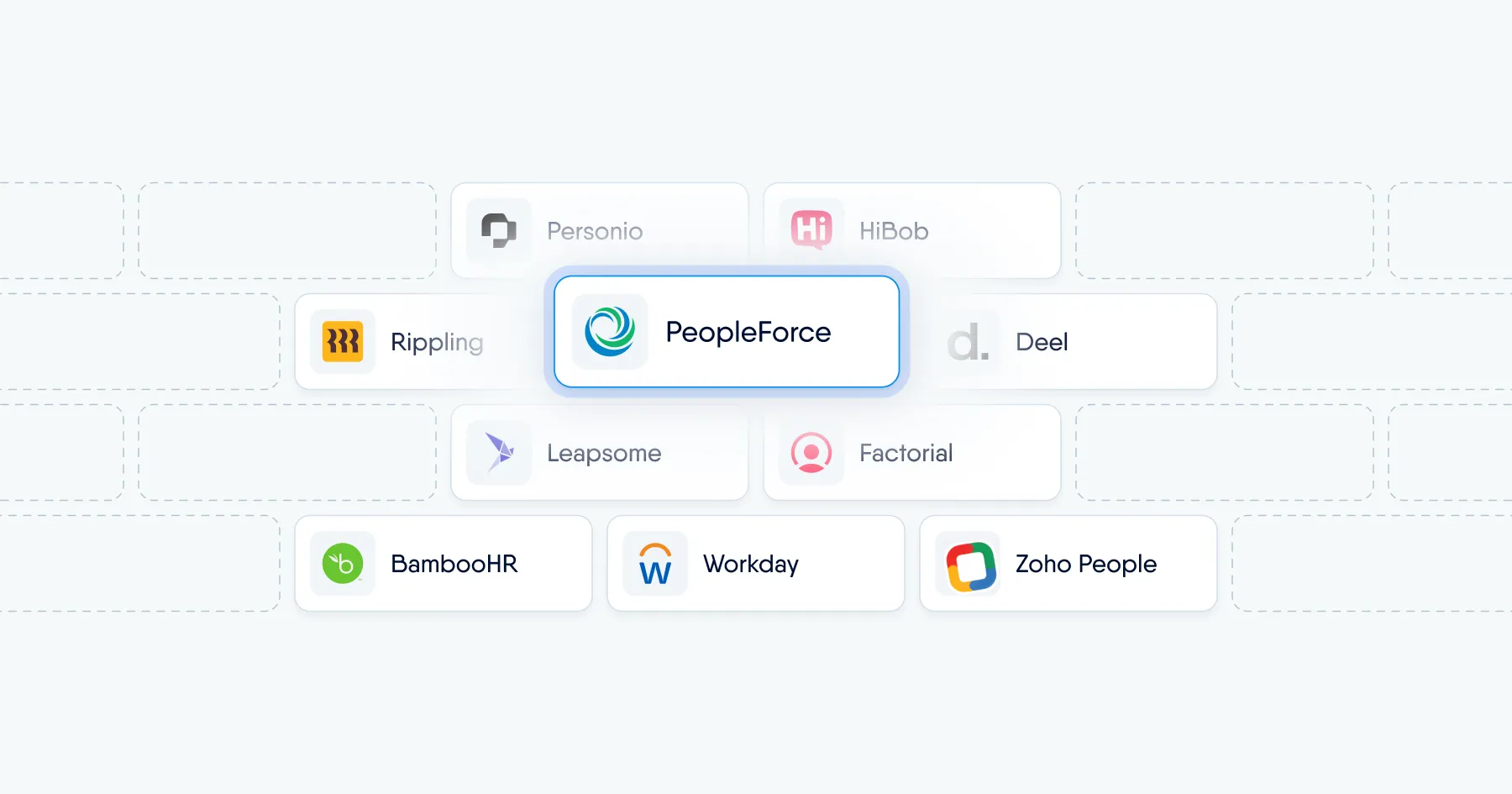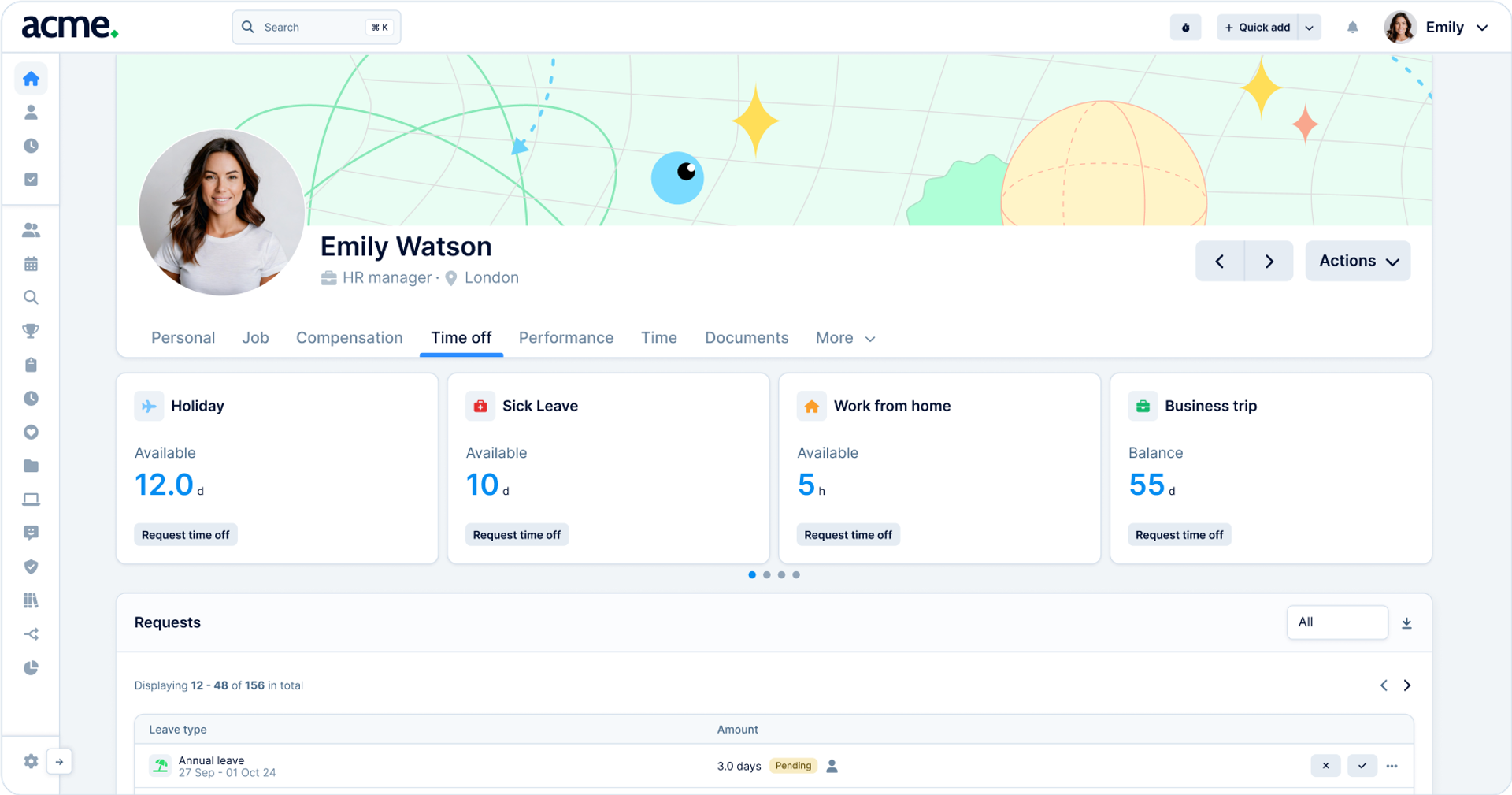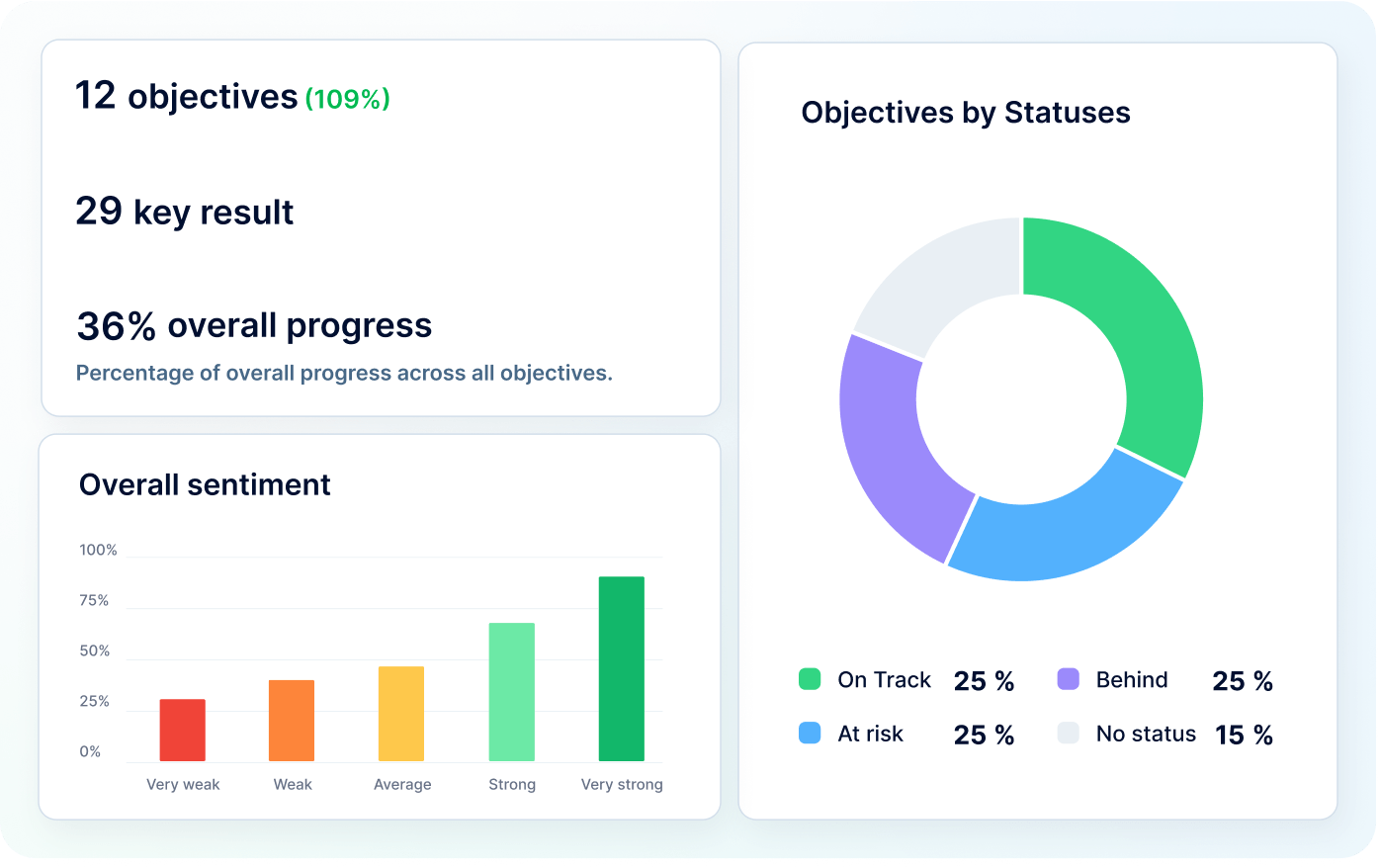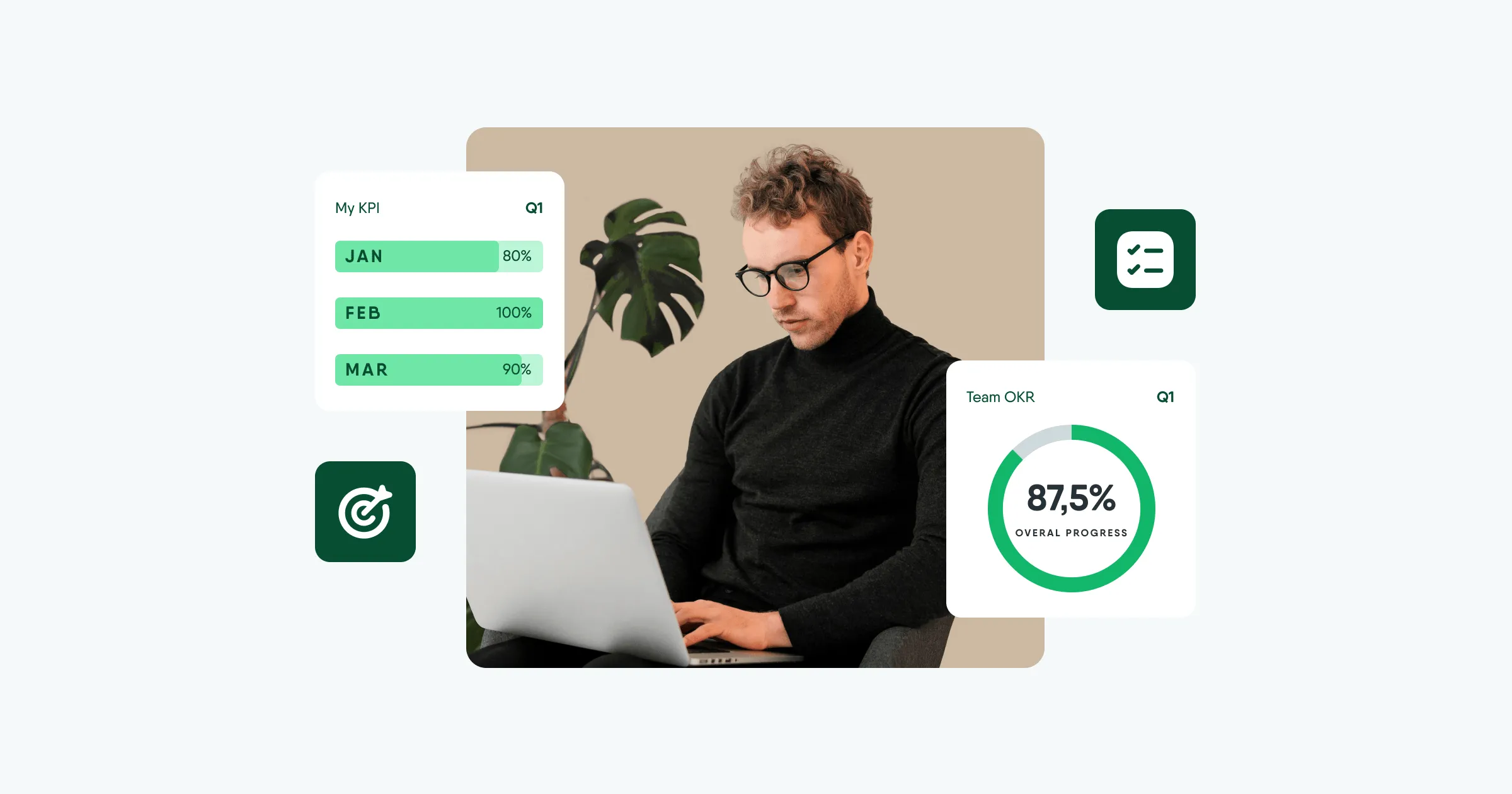
Comparing the top 10 HRM systems: How to choose the best one?
If you’re aiming to improve your business operations this year, a great place to start is by digitizing and automating your HR processes. One of the most effective ways to do this is by implementing an HRM system (also known as an HRMS or an HR platform). This comprehensive tool helps streamline both core and routine HR tasks such as recruitment, hiring, preboarding, onboarding, time-off management, surveys, performance, reporting, and more by integrating multiple aspects of human resources management into a single all-in-one platform, providing essential HR services.
An HRM system enables you to track both qualitative and quantitative metrics, test improvement strategies, and keep all employee-related information centralized and accessible. Good HR administration reduces common problems for HR teams and makes it easier to choose and use the right HR tools.
What is an HRM system, and why do you need one?
Human Resource Management (HRM) is a cornerstone of any successful organization, focusing on the strategic management of an organization’s workforce. HRM encompasses a wide range of activities, including recruitment, selection, training, and employee development. Effective HRM is crucial for achieving organizational goals, as it ensures that the right talent is attracted, retained, and developed.
In today’s digital age, Human Resources Management Systems (HRMS) have become indispensable tools for streamlining HR processes, enhancing employee engagement, and boosting overall organizational performance. These systems help HR professionals manage employee data, automate routine tasks, and provide valuable insights into workforce management.
What engagement goals can you achieve with HRM?
As mentioned, an HRM system simplifies daily operations and increases the overall efficiency of your HR function. Additionally, it helps you:
- Oversee onboarding, development, and career growth – from hiring to internal mobility.
- Run engagement surveys and internal research – including attendance tracking, predictive analytics, and global payroll.
- Analyze HR-related costs – such as turnover, compliance, expenses, and retention.
- Track productivity and performance – with performance reviews and compensation tools.
- Keep employee and candidate data organized – using applicant tracking and HR systems.
- Manage HR documentation and ensure compliance – including benefits, payroll, and automated processes.
- Improve communication across the company – through self-service portals and support tools for HR, managers, and employees.
How we selected the top 10 human resources management systems
We compared the leading solutions on the market based on the following criteria:
- Availability of core HR features (recruiting, performance tracking, analytics, etc.)
- Ease of implementation and system integration
- User interface and experience (UI/UX)
- Flexibility and customization options
- User feedback and reviews
- Pricing and language/localization support (UA/EN)
- Customer service and support quality.
Which HRM systems are on the market, and which one is right for your needs?
With so many HRM systems available today, choosing the right one can feel overwhelming. Each platform offers a unique combination of features, strengths, and target audiences – from startups to large enterprises.
To help you make an informed decision, we’ve selected the 10 most popular HRM systems globally, based on market presence, user reviews, and core functionality:
- PeopleForce
- BambooHR
- Factorial
- Personio
- Rippling
- Deel
- Zoho People
- HiBob
- Leapsome
- Workday
We analyzed each system using a range of critical criteria to highlight what truly matters when selecting the ideal HRM solution for your business.
Whether you’re looking to streamline recruitment, manage performance, automate HR operations, or boost employee engagement, this comparison will guide you toward a platform that fits your company’s size, needs, and growth plans.
1. PeopleForce: An ultimate HR hub for the best employee experience management
Originally developed for SMBs, PeopleForce has since evolved into a versatile HR platform suitable for businesses of all sizes. It works equally well for companies with 50 employees or 450+.
PeopleForce is an all-in-one HR platform designed to deliver an exceptional employee experience while automating HR processes throughout the entire employee lifecycle.
With over 1100 clients in 25+ countries and more than 90,000 active users, PeopleForce focuses on eliminating routine manual work so HR teams can concentrate on what matters most – people and their growth.

The platform offers modular solutions that can be tailored to each company’s specific needs:
- CoreHR – A centralized HRIS to store employee data, automate workflows, and improve transparency in internal communication.
- Recruit – A recruitment module for faster candidate sourcing, streamlined tracking, and collaborative hiring.
- Perform – A performance management tool for setting goals, running review cycles, and collecting structured feedback.
- Pulse – A survey feature to measure employee engagement, satisfaction, and team sentiment in real-time.
- Desk – A request and ticketing system to manage internal inquiries and resolve issues efficiently.
- Time – A time tracking and attendance solution with built-in analytics and reporting.

Additionally, the platform includes customizable dashboards, in-depth analytics, and flexible configuration options to fit any team’s workflow.
Pricing: from $2.5/month per employee. Minimum billing starts at $125, which includes up to 50 employees.
2. BambooHR
BambooHR is one of the most widely used HRM systems in the world, particularly popular among small and medium-sized businesses. However, for large enterprises, it may lack the flexibility and depth required for complex HR operations.
Key advantages:
- Offers detailed analytics, though applying advanced filters or segmenting data can be challenging.
- Covers basic HR needs efficiently, making it a reliable entry-level solution.
- Includes electronic signature functionality, streamlining document approval processes.
- Convenient time tracking and cost monitoring tools help measure productivity and workforce-related expenses.
Drawbacks:
- Not ideal for full-scale HR departments that require a diverse toolset across various HR functions. For example, it offers limited capabilities in recruitment management, in-depth analytics, and fostering company culture.
- Pricing is not well-adapted for some markets and starts at around $6 per employee per month, which can be costly for companies operating in developing economies.
Pricing: BambooHR doesn’t list its pricing publicly, but it’s known that the platform typically charges on a per-employee, per-month basis for teams larger than 25 people, and offers a flat monthly rate for smaller teams. While exact numbers aren't confirmed, pricing is allegedly starting at around $6 per employee per month.
3. Factorial
Factorial is a modern, user-friendly HR platform designed for small and mid-sized businesses, especially in the EU and LATAM. It helps simplify HR processes by automating time tracking, managing time off, and improving performance reviews. Factorial addresses common HR challenges like messy onboarding, scattered employee data, and slow workflows.
Key features include a centralized employee portal, strong document management, and a built-in applicant tracking system.
Key advantages:
- Simple and visually appealing UI/UX, making it easy to onboard HR teams.
- Strong time-off management and shift planning tools.
- Includes performance review functionality and document management features.
- Supports payroll integration in selected markets.
Main limitation:
- Limited customization and advanced analytics tools compared to more enterprise-focused solutions. It may feel too basic for companies with complex workflows or multi-layered HR strategies.
Pricing: starting at $4.50 per 1 user per month.
4. Personio
Personio is a popular HRM platform in Europe, best suited for small to mid-sized companies that want an all-in-one HR and recruitment system.
Key advantages:
- Designed specifically for European HR standards, including compliance and GDPR.
- Strong recruiting and applicant tracking tools.
- Offers performance management and employee data management in one system.
- Clean dashboard with workflow automation for approvals and reminders.
Main limitation:
- The platform can feel less flexible outside the EU context or for global companies.
- Limited third-party integrations compared to more globally established platforms.
Pricing: Personio offers two pricing editions but does not publicly disclose its rates. Pricing is customized and must be requested directly. It is believed to start at around $7.00 per employee per month.
5. Rippling
Rippling is an all-in-one workforce platform that bridges HR, IT, and finance, making it a unique offering for scaling tech companies.
Key advantages:
- Unified platform that includes HR, payroll, device management, app provisioning, and more.
- Great for companies needing both HR operations and IT onboarding in one place.
- High level of automation and integration capabilities.
- Scalable and customizable with modular add-ons.
Main limitation:
- Can be overwhelming for smaller teams or those who don't need IT functionality.
- Pricing grows significantly with added modules; may not be cost-effective for basic HR needs.
Pricing: Rippling offers a modular pricing structure, with the base platform starting at approximately $8 per employee per month. Additional modules, such as performance management, device management, and global payroll, are available at extra costs.
6. Deel
Deel is a global-first HR platform focused on hiring, paying, and managing international employees and contractors.
Key advantages:
- Best-in-class global compliance tools – handles local labor laws, taxes, and documentation across 100+ countries.
- Enables contractor and EOR (Employer of Record) hiring with ease.
- Offers automated payroll and benefits administration globally.
- Rapid onboarding for international hires without needing local legal entities.
Main limitation:
- Focused more on global hiring and compliance than on traditional core HR features like engagement or performance tracking.
- May lack some internal HR depth for managing teams once onboarded.
Pricing: Deel provides tailored pricing based on specific business needs. For contractor management, the cost is around $49 per contractor per month. For full-time employee services, pricing starts at approximately $599 per employee per year, with variations depending on selected features.
7. Zoho People
Zoho People is a strong choice for companies focused on administrative and organizational HR tasks. It's especially effective for larger organizations with 500+ employees.
Key advantages:
- Ideal for creating checklists to manage large, structured processes such as onboarding and offboarding.
- Provides document and email template builders, useful for standardizing HR communication.
- Allows you to visualize and manage organizational structure, supporting complex team hierarchies.
- Features an employee portal where team members can track each other's progress, contributing to visibility and recognition.
Main limitation:
- The platform can be challenging to configure and scale properly without technical support, especially for companies looking for deeper integration between modules or more intuitive UX for non-tech-savvy users.
Pricing: starting from $1.25 per employee per month (billed annually).
8. HiBob
HiBob is a modern HR platform designed for fast-growing companies, particularly in tech, creative, and startup sectors. It positions itself as a fresh alternative to legacy HR systems with outdated interfaces.
Key advantages:
- Great fit for multicultural teams, with localization options for different markets.
- Highly flexible in setting up complex org structures, locations, and team groupings.
Includes tools for engagement, performance management, and internal communication. - Strong emphasis on building and maintaining company culture, especially in remote/hybrid teams.
Main limitation:
- Can be overwhelming for smaller teams due to the amount of configuration required.
- Pricing is on the higher side, which may not suit early-stage companies or those outside of the U.S./UK.
Pricing: HiBob's pricing is customized based on the number of employees and specific business requirements. While exact figures are not publicly disclosed, the platform is known for offering flexible pricing tailored to each organization's needs.
9. Leapsome
Leapsome is a performance and engagement platform focused on continuous improvement and learning. It’s ideal for companies that want to build strong feedback and growth cultures.
Key advantages:
- Specialized tools for goal setting (OKRs), feedback cycles, 1-on-1 meetings, and learning paths.
- Strong analytics to track performance trends and team engagement.
- Seamless integration with tools like Slack and MS Teams for daily engagement.
- Useful for building structured growth frameworks and performance reviews.
Main limitation:
- Not a full HRIS – it's more of a people enablement platform, so you’ll need to integrate it with a core HR system.
- Can require a learning curve for managers not familiar with structured feedback cycles.
Pricing: Leapsome provides a modular pricing model, with a minimum annual contract of €6,000 (approximately $6,000). The final cost depends on the number of employees and selected modules, such as performance management and employee engagement tools. For detailed pricing, prospective customers are encouraged to contact Leapsome directly.
10. Workday
Workday is one of the most powerful enterprise-level HRM systems on the market, designed for large corporations with complex organizational needs.
Key advantages:
- Extremely comprehensive: covers everything from HR to finance and planning.
- Highly customizable workflows, deep analytics, and strong compliance capabilities.
- Well-suited for multinational companies due to its scalability and localization options.
- Trusted by Fortune 500 companies for its robustness and security.
Main limitation:
- High cost and complex implementation make it unsuitable for small or mid-sized businesses.
- Customization requires technical expertise or certified consultants.
Pricing: Workday's pricing is tailored to each organization, with estimates suggesting costs ranging from $35 to $99 per employee per month, depending on the modules selected and the number of users. Implementation fees can be significant, potentially matching the total annual subscription cost.
Implementation and integration
The first step is to assess the organization’s specific HR needs and evaluate different HRMS vendors to find a system that aligns with the organization’s goals and objectives. Integration with existing systems, such as payroll software and employee databases, is crucial for seamless data exchange and minimizing disruptions to HR operations.
Providing comprehensive training and support to HR professionals and employees is essential to ensure they can effectively use the new system and maximize its benefits. A well-implemented HRMS system can significantly enhance HR operations, making them more efficient and effective.
Security and compliance
Compliance with relevant laws and regulations, such as GDPR and HIPAA, is also critical. HRMS systems should be designed to meet these compliance requirements, including accurate reporting and tracking of employee data. By prioritizing security and compliance, organizations can protect their employee data and avoid the risks and penalties associated with non-compliance.
Summary: Key features of HRM systems
Effective people management is impossible without advanced HRMS platforms. From my experience, automating core processes – whether it’s accurate employee data management, timely payroll, or benefits administration – not only speeds up HR work but fundamentally improves its quality. Performance and development tools become essential for making informed leadership decisions, while self-service portals boost employee engagement and autonomy.
What stands out most is the deep analytics these systems provide, revealing real workforce trends and enabling smarter forecasting. Modules for talent management, time tracking, and leave administration make routine tasks almost invisible, freeing HR teams to focus on strategic initiatives.
If you truly want to elevate HR and turn your people into your greatest asset, choosing the right HRMS isn’t just a technical upgrade – it’s a strategic move that drives business growth.
With over five years in HR tech content creation, Maria explores how technology, people, and culture shape the workplace of today. Her interests include HR, AI, IT, and personal development, and she brings a data-driven, human-centered perspective to her writing.
Get started with PeopleForce today
Automate your HR routine to create a high performance culture in your company. PeopleForce is your best HRM alternative to stay business driven but people focused.

Recent articles
10 essential HR solutions for common startup challenges
Discover the top 10 HR challenges startups face and practical solutions to overcome them so your startup can thrive and grow efficiently.
How much time HR platform saves for HRs and admins
Discover how modern, all-in-one HR software simplifies complex processes, ensures compliance, and boosts efficiency to help HR teams manage growing responsibilities with ease.
Empowering HR management for business through modern HR software
Employee retention is one of the top five priorities for human resource managers. Struggling to keep your talent, let alone empower employees to perform their best? If so, hi, you’re in the right place.
10 recruitment tasks you can automate with PeopleForce
Recruitment requires strategy, and the right software makes it easier. PeopleForce’s ATS, pipeline management, and bulk actions simplify workflows and save recruiters time.
PeopleForce vs Alternatives: How PeopleForce stands out against competitors
Use this guide to assess PeopleForce against alternatives and choose the right HRM.

